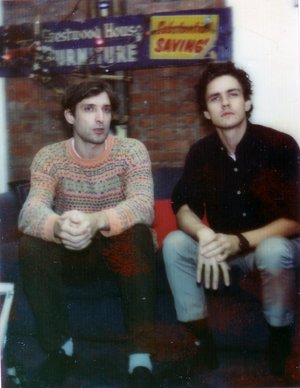 The story of Terry Tolkin’s record label, No. 6 Records, has been somewhat lost amidst the nostalgic hosannas for mid- to late-90s indie rock. A new compilation of No. 6’s 7-inch output, titled Speed Dating [No. 6], will hopefully change all that.
The story of Terry Tolkin’s record label, No. 6 Records, has been somewhat lost amidst the nostalgic hosannas for mid- to late-90s indie rock. A new compilation of No. 6’s 7-inch output, titled Speed Dating [No. 6], will hopefully change all that.
Speed Dating has the feel of a great lost mix tape. If you think about it, a 7-inch is basically a band’s thesis statement. Speed Dating captures that headlong rush of great pop ideas —the fizz and pop— many times over. Stylistically restless but aesthetically consistent, Speed Dating is also a reminder of a more innocent time, when a band could make its mark with an A-side and a record label’s careful connoisseurship still meant something.
Luna’s Dean Wareham once said of Terry, “You meet two kinds of people at major labels —those who live formusic, and those who live off music. Terry lived for music.”
• • • • • • • • • • • • • • • • • • • • • • • • • • • • • • • • • • • • • • • • • • • • • • • • • •
PICTURED: TERRY WITH DEAN WAREHAM, 23RD ST. PHOTO COURTESY HOWARD THOMPSON
• • • • • • • • • • • • • • • • • • • • • • • • • • • • • • • • • • • • • • • • • • • • • • • • • •
Originally a Deadhead from New City in Rockland County, Terry’s musical paradigm was forever shifted in 1978 when he moved to NYC. Turned on to punk rock by his boyfriend, who ran a small record label, Terry was enlisted to take records around to Ed Bahlman’s influential 99 Records on Macdougal.
It didn’t take long for Bahlman to offer Tolkin a job. From there, he became involved with the day-to-day operations at the store and at Bahlman’s label, 99,* home to ESG, Liquid Liquid, the Bush Tetras and Glenn Branca, among others. At this time, he also started DJing and booking shows at NY venues like Danceteria.
It was the start of a career that would include A&R jobs at Touch & Go, Dutch East India Trading Co., Caroline, Rough Trade and Elektra, where he became VP of A&R from 1992 to 1996, signingStereolab, Luna, the Afghan Whigs, Scrawl and Jennyanykind.
He started No. 6 in 1989, when he was at Rough Trade, and disbanded the label ten years and fifty releases later. During that time, he released records by Dean Wareham, Tindersticks, Cagney and Lacee (Dean Wareham’s band with his first wife, Claudia Silver), Ornament (an Afghan Whigs offshoot) and Unrest, among others.
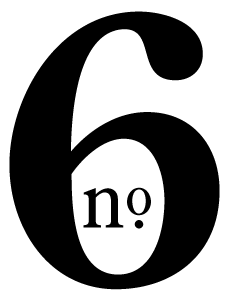 The high-flying “alt-rock years” finally ended at Elektra in 1996 with a huge personnel shake-up. This was an incredibly dark time in Terry’s personal life as well —his apartment building collapsed and he lost everything in the resulting fire, including all the No. 6 masters and artwork, as well as his three cats and his record collection. (This period is covered in great detail in Dean Wareham’s memoirBlack Postcards.) Terry currently lives on a farm, as far away as you can get from the insanity of NYC.
The high-flying “alt-rock years” finally ended at Elektra in 1996 with a huge personnel shake-up. This was an incredibly dark time in Terry’s personal life as well —his apartment building collapsed and he lost everything in the resulting fire, including all the No. 6 masters and artwork, as well as his three cats and his record collection. (This period is covered in great detail in Dean Wareham’s memoirBlack Postcards.) Terry currently lives on a farm, as far away as you can get from the insanity of NYC.
Terry chatted at length with me about the genesis of the label and his wayward adventures in the record industry.
INFLUENCES
At what age did you first get interested in music? What were some of the first bands to make a lasting impression on you?
My Mom says that I always liked and reacted to music. [My parents] spent a lot of time (and money) sending me to different music lessons on all kinds of instruments. It always ended the same way: “Terry just doesn’t want to play music.” I remember performing in front of my family and at a couple of recitals and just hated being stared at!
I [went] to the same summer camp in upstate New York for 11 years from 1967 to 1978. My counselors were all Dead Heads and would go on weekends to see the Grateful Dead when they would play. At night they would load up the reel-to-reel and play their tapes of live Dead shows as we went to sleep. By the time I was 12 I knew the words to most of their songs and I still love and listen to them (up to and including 1979’s Blues For Allah).
After Jerry Garcia started working on their movie and locking himself in an editing room with mountains of cocaine and heroin it all went downhill. But they remained an important influence on me throughout my “career.” For many years as a teen, the only records I owned were their albums and boxes of live tapes.
 I grew up in New City, an upstate suburb of NYC. When I was 17 I moved into Manhattan on my own. I lived in a small studio above the Waverly Theatre in Greenwich Village. There were record stores all around me and I became friends with some of the employees.
I grew up in New City, an upstate suburb of NYC. When I was 17 I moved into Manhattan on my own. I lived in a small studio above the Waverly Theatre in Greenwich Village. There were record stores all around me and I became friends with some of the employees.
That’s when my music education really started to diversify. There was WNEW-FM in NYC. This was in the days when the DJs could play whatever they wanted, so it could be John Lennon then Bob Marley and then Elvis Costello all back-to-back. You would never hear that today. But the “Go-It-Alone” aesthetic of the Grateful Dead in their heyday still inspires me now.
When you first moved to NYC, you worked at the original 99 Records shop on Macdougal. 99 only released a handful of records over the course of its short history, each one of them reflective of owner Ed Bahlman’s impeccable ear. Working alongside Ed must have been an incredible learning experience.
Working with and becoming friends with Ed Bahlman was one of the most important relationships that I ever had. It was one of those relationships that sends your life pinging off into a completely different realm.
I went to the store every Friday after I got paid. Ed would be spinning records and a pile would start to develop. I always left by telling him that if he ever needed to hire someone that I would take the job. He worked at the store seven days a week and worked as a maintenance man at an Upper East Side condo building full time.
After about four months he asked me if I would start working there. I didn’t even give notice at the office job I had been at for a year. I just started the next day. I went from making about $300.00 a week to $125.00. I didn’t care. I thought I had the best job in the world.
NO. 6 BABY
What inspired you to start No. 6?
I started No. 6 while still a salesman at Caroline Records Distribution. This was after 99 had closed and a short stint at Dutch East India. DEI had hired me because I was the buyer at 99 when it went under. So I went from retail to wholesale.
At 99, DEI and at Caroline I formed many of the relationships that would come into play later on in my life. Many bands sent their demos to me to try to get into the door at each of those outfits. I thought a lot of them were worthy of release, but higher ups did not, or their limited budgets wouldn’t allow for it. I sat on the tapes and kept in touch. I had already signed the Butthole Surfers to Touch n’ Go while I was at 99. I was de facto managing and booking their shows for them although neither of us would use that poisoned word. But that’s off of your point and a whole other story.
What really got me going to start my own label was that, one day at Caroline, Thurston Moore (of Sonic Youth, they really wanted to be on 99 but Ed just didn’t like them) came in with a cover of a Captain Beefheart song for a compilation album of his songs to be released later that year called Fast & Bulbous. I thought it was good, but when he brought me a tape of the final LP, I hated it. [SY’s] contribution was the best one on it. (I would become good friends with Don Van Vliet years later and he told me how much he hated it too!). I had the thought of doing one of these tribute LPs of Neil Young’s music. Caroline bankrolled it and No. 6 was born.
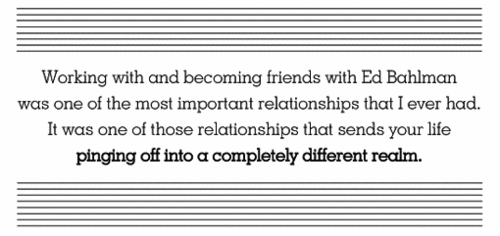
Why “No. 6,” aside from the obvious fact that The Prisoner is one of the strangest and most surreal television series of all time? (And I see that Mark kept the typeface for Speed Dating’s artwork. Nice one, Mark!)
I remember seeing some of the series on public television in the late 1960s and thinking about how cool it looked. Then around 1975 they re-broadcast it again. I was 16 and could really get my head around it by then. The whole concept and execution was unlike anything else being shown on television at that time.
The KAR-000 catalogue system came from the license plate prefix on the lead character’s car back in the real world. Although I had about 50 releases, this first one in 10 years is catalogue number KAR-006. I had purposefully skipped past the No. 6 catalogue number in the course of my releases so that I could use it at a later date for a project just like this.
Aside from 99, what labels were you enamored of at the time? Did they help you refine an aesthetic vision for what you wanted to do with your own label?
There were so many at the time. It was the season of the indie label, both here and in the UK. Mute, Touch n’ Go, SST, Sub Pop, 4AD, Amphetamine Reptile and Db.
But the one whose aesthetic I most closely related to at the time was Factory. Tony Wilson had come into the store a few times and I really liked his attitude and approach.
I also had a boyfriend at the time who worked at the Phyllis Kind Gallery in SoHo. She was representing a lot of really good new artists at the time and I really dug some of the work.
She also represented Howard Finster. He would call me up when new packages came in from him. And of course —film. I went to the movies almost every week in the ‘70s and ‘80s. The city was flush with some of the greatest first run and “art houses” in the country and I took full advantage of them.
Shortly after I got the job at 99 I had to move. I couldn’t afford $450.00 a month rent on my new salary so I moved in with my boyfriend in 1979. He had a nice sized loft a few doors from CBGB’s. It would become the scene of a lot of band flops over the next few years. He was older than me, and a writer with many connections in the underground. I think he was a Weatherman in the 1960s. He knew Ginsberg and Burroughs and I met them during this time too.
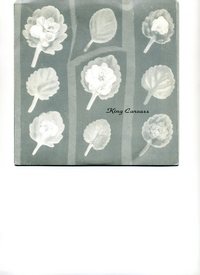 Over the course of its history, would it be accurate to say that No. 6 functioned as a testing ground for bands —a place where they could experiment and develop on their own terms?
Over the course of its history, would it be accurate to say that No. 6 functioned as a testing ground for bands —a place where they could experiment and develop on their own terms?
I never thought of No. 6 as any kind of “proving ground” for bands. The bottom lines were that whichever label I was working for at the time didn’t want to sign them and no other label did (usually) either.
I was able to get Caroline to sign Unrest while I was there. Later I was able to get Rain Sanction signed to Sub Pop after Rough Trade (where I was working) said no. I did Dean Wareham’s single from the demo we got paid to do for Elektra. I had pretty much already signed him to Elektra by the time it came out. jennyanykind were just too prolific to let it all back up, so we started releasing it on No. 6 just to take the pressure off. Nada Surf was kinda imposed on me by Elektra employees AFTER they became one hit wonders. But 90% of the other artists would never have gotten their music out if it wasn’t for my salary and No. 6.
There’s a fairly clear aesthetic at work throughout most of Speed Dating, with one notable exception: the Dwarves. Stylistically, where do they fit in? They’d split with SST at that point, right?
To my mind the Dwarves fit in perfectly. I had gotten a demo from them at Rough Trade. Of course Geoff Travis hated it. The only things they let me do there was sign the Butthole Surfers (again) and they let me license an old Robert Smith of The Cure side project LP called The Glove, but that was it.
The Rough Trade gig was more important to No.6 as a source of income and in developing relationships with Scrawl and Dean Wareham from (then) Galaxie 500.
I told Paul Cafaro (Blag Jesus) that I would put out the Dwarves whole demo as a 7″. I then booked a bunch of shows for them between Chicago and NYC. Their first show in New York was at CB’s. They played the single track for track and then left the stage. They were on stage for about 12 minutes. It was fantastic.
What was the genesis of Greg Dulli/Afghan Whigs/Marcy Mays collaboration, Ornament?
Both bands were from Ohio. Scrawl from Columbus and the Whigs from Cincinnati. They had actually been on the same bill several times so they already knew each other. This collaboration was all about taking that “Bad Boy For Girls” image down a botch, but only one notch.
How did you find the Tindersticks? Their dark, velvety pop vision (v. Scott Walker) fits well alongside Dean Wareham’s contributions.
The Tindersticks debut had already been released (to no initial aplomb) in the UK. I had Stuart Staples’ first record as the Asphalt Ribbons and quite liked that.
But the Tindersticks debut LP was on a whole other level. It was brilliant and still one of the most relevant double LPs ever recorded.
I tried to license it for Rough Trade but they didn’t want [it]. I became friends with [the band] during the process though. I was hired by Elektra around this time and I thought of licensing their debut for them. But as with several bands (Monster Magnet, Balloon Guy and Spiritualized), as soon as I became interested, several other labels would suddenly want to get on board.
In the cases of Spiritualized and Tindersticks, they had signed in the UK worldwide to their respective labels, which had no intention of releasing the work over here. But when Elektra’s legal department approached them to do the license, they decided to put [the record] out themselves.
So much time had elapsed since the Tindersticks’ debut and when the US company could schedule it that it was decided to wait to simultaneously release their second LP here. I couldn’t afford to promote the debut properly on No. 6 so I dropped them into the lap of Bar None, friends of mine who had had great success with They Might Be Giants.
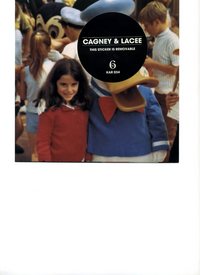 Did Cagney and Lacee, Dean’s group with his first wife, Claudia, ever release anything else? Or was it a one-off?
Did Cagney and Lacee, Dean’s group with his first wife, Claudia, ever release anything else? Or was it a one-off?
Yes, I did a full length CD with Cagney and Lacee. It’s called Six Feet Of Chain and is brilliant. They also appeared on No. 6’s last release The Lives Of Charles Douglas by Alex McCauley. Moe Tucker plays drums on that record too. It was produced by Kurt Ralske and is my single favorite release on No. 6.
Which No. 6 release are you most proud of? Which was the most difficult to get out into the world? Any projects that you never got off the ground, despite your best efforts?
The one record that, over ten years later, that I still actively listen to is The Lives Of Charles Douglas by Charles Douglas (available on Amazon for like 99¢). Next up would be the Cagney And Lacee LP and Unrest’s Imperial f.f.r.r. I still plug in Guitarroristsoccasionally when I’m working and of course —duck, upcoming shameless plug— the new singles compilation Speed Dating.
Actually this release was the most difficult to get out. That’s because over the Thanksgiving weekend in 1997, I had flown back here to Kansas for the holiday. When I got back I found out that the 135 year old brownstone that I had been living in for the on E. 17th St. for the last eight years had collapsed while undergoing renovations.
Everything that I ever owned was destroyed in the collapse and ensuing fire. That meant my lifelong record collection and all of the masters and original artwork for No. 6. All three of my cats were also killed. There was nothing left to salvage.
In order to cobble together this compilation, I had to buy most of the singles on the Internet. They went for between literally 1 penny to $68.00.
Then I had to send them all to Dean Wareham, who has a turntable and burned them onto a CD. That went to Mark E. Robinson at Teenbeat, who spent many hours equalizing everything and trying to take out as many pop ands skips as possible. What a man.
There are several gaps in the No 6 cataloge. That’s because I spent money on a project that didn’t come out. These would be a single by the Butthole Surfers of two songs, a Paul Leary composition called “I Love You Peggy On Mannix” b/w “Wholly Man”. That didn’t come out because they signed to Columbia and they didn’t want it released.
Another was a Flaming Lips single of three tracks from the then unreleased “Mushroom Tapes” demos. This would later evolve into their (for me) magnum opus In A Priest Driven Ambulance… LP. They dumped the woman who had been their manager up until that time and signed to Reprise, who didn’t want that to come out either.
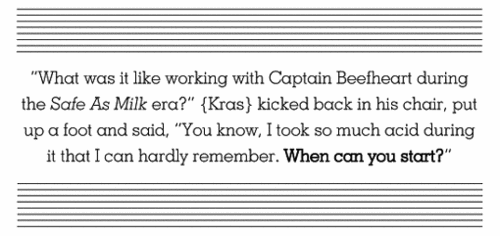
I spent thousands on Sean Macoviack’s (aka Grasshopper of Mercury Rev) solo record. The thing was my idea in the first place and he went and secretly sold the rights to it in Europe. They then rushed it out two months before I was ready to release it here, which killed all of my sales. In a way, there was one little bit of good to come out of that whole shitty situation. That record really sucked.
The last one was a Captain Beefheart EP called Hoboism, a fantastic track left over from the Bat Chain Puller sessions. I had become quite friendly with Don Van Vliet through my years at Rough Trade and then especially Elektra. Elektra’s CEO was Bob Krasnow, the last of the great 1960’s A&R guys to run a major label. He had to fight hard through all of the “regime changes” that took place at our parent Warner Bros during the 1990s. He made it possible for me to sign bands like the ‘lab, Scrawl, jennnyanykind, the Whigs and Luna.
Anyway, I went out to Don’s house in Eureka, California. Kras had produced Beefheart’s Safe As MilkLP and then signed him to WB. Things somehow turned acrimonious after that and they hadn’t spoken in 15 years. I had persuaded Don to let me back up a mobile studio onto his front lawn and we were going to record a LP of old blues songs. I had flown out there to meet him face-to-face for the first time and kinda seal the deal. Well, instead of coming together over the next three days, it mostly fell apart. Don used his wife, Jan, to say that they didn’t want Hoboism to be the last word on his career and that they couldn’t find anyone they like to play on the blues album.
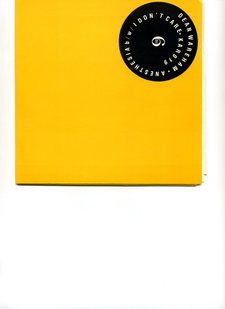 In the early- to mid-90s, Elektra had a phenomenal roster of bands that included Stereolab, Luna, Afghan Whigs Scrawl, and th’ Faith Healers, among others. The music had a great sense of integrity and individuality.
In the early- to mid-90s, Elektra had a phenomenal roster of bands that included Stereolab, Luna, Afghan Whigs Scrawl, and th’ Faith Healers, among others. The music had a great sense of integrity and individuality.
I’m proud to say that I signed three of the four bands that you mentioned in your question. I didn’t sign Th’ Faith Healers. I don’t know who signed them —most likely they came through the International Department but they were A&R’d by Nancy Jeffries. She is the most unflappable human on the planet. She went on to head the A&R Department after the disposition of Bob Krasnow and, later, Howard Thompson. Those two men were the real reason that Elektra managed to have the Pixies, Danny Gatton, Metallica, Brand Nubian and jennnyanykind all on the label’s radar.
Let me tell you how my final job interview for Elektra went. My lawyer and Elektra’s legal eagle Gary Casson had already agreed on a contract by this time. I just had to meet with Bob Krasnow. Fuckin’ Bob Krasnow —google him and you won’t get a sliver of what the man has done! I went up to his magnificent corner office on the 17th floor at Rockefeller Plaza.
I sat in a chair opposite him and we just introduced ourselves and he asked me a couple of benign questions and then there was the silence. He broke it by asking me if I had any questions. I instantly said “Yeah, what was it like working with Captain Beefheart during the Safe As Milk era”? He had been smoking a Cuban cigar throughout. He kicked back in his chair, put up a foot and said, “You know, I took so much acid during it that I can hardly remember. Um, when can you start?”
Despite the “Gonzo” atmosphere on the East Side of the 17th Floor in that period, we still had weekly meetings with radio, legal, production and press staffs to jam our projects down their throats.
It was up to the A&R person to coordinate all of that. I just wanted my bands to get their fair share of the “Milllion Dollar Bullets.” None of my bands were ever dropped while I was there. There are projects like Balloon Guy (buy their West Coast Shakes on Amazon for like a $1), Astronaut (check out their tunes on MySpace) and Daniel Johnston that I wished that I could have worked with. But things happened the way that they did and I’m proud of what I did get done while I was in “the Majors.”
* The 4th issue of Tim Ross’ zine Tuba Frenzy included an incredibly comprehensive history of 99. Still in print, you can order it by writing to Tuba Frenzy.
![]() Vivien Goldman, “Private Armies (Dub)” (from the Dirty Washing EP, 1981)
Vivien Goldman, “Private Armies (Dub)” (from the Dirty Washing EP, 1981)
![]() Unrest, “June” (from Imperial f.f.r.r., 1992)
Unrest, “June” (from Imperial f.f.r.r., 1992)
![]() Stereolab, “Golden Ball” (from Transient Random Noise-Bursts with Announcements, 1993)
Stereolab, “Golden Ball” (from Transient Random Noise-Bursts with Announcements, 1993)
![]() Luna with Laetitia Sadier, “Bonnie & Clyde” (from Penthouse, 1994)
Luna with Laetitia Sadier, “Bonnie & Clyde” (from Penthouse, 1994)
![]() Cagney and Lacee, “Time” (from Speed Dating, 2009)
Cagney and Lacee, “Time” (from Speed Dating, 2009)
RECORD SLEEVE IMAGES COURTESY OF No. 6

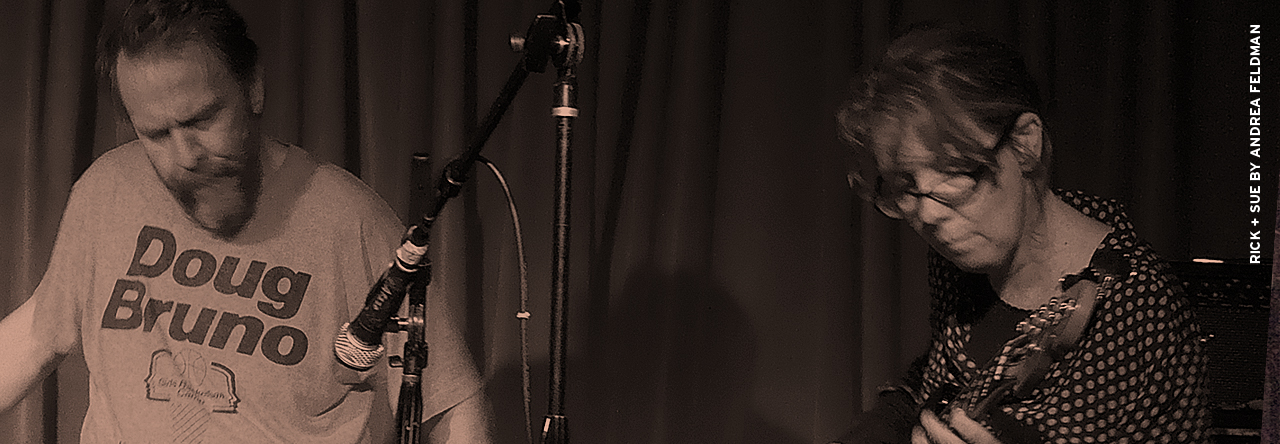
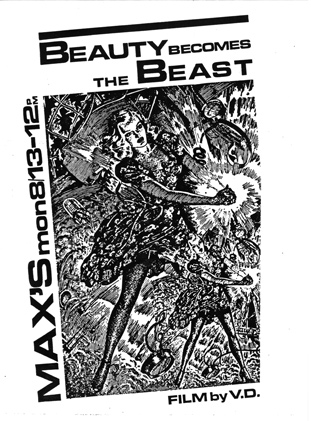 Excerpts from some blog posts of interest this week.
Excerpts from some blog posts of interest this week.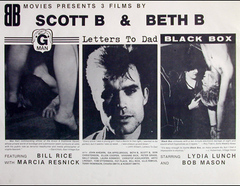 • • • • • • • • • • • • • • • • • • • • • • • • • • • • • • • • • • • • • • • • • • • • • • • • • • • • • •
• • • • • • • • • • • • • • • • • • • • • • • • • • • • • • • • • • • • • • • • • • • • • • • • • • • • • •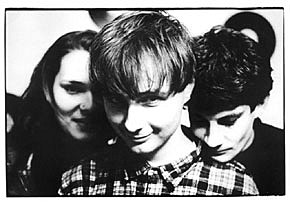
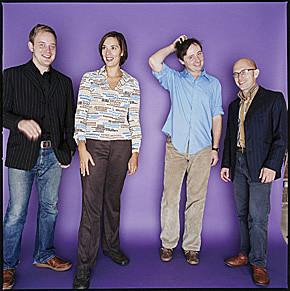 Tim: [referring to Lollapalooza] It’s really good to play in front of people who don’t really know anything about us. You don’t have to understand every single thing about what we do or why we do it to like it. It should be fun and enjoyable. And people might just get the groove of what we do and like the melodies. But then, it’s not “alternative rock” so I don’t know. There’s an awful amount of mainstream rock now parading itself as alternative music.
Tim: [referring to Lollapalooza] It’s really good to play in front of people who don’t really know anything about us. You don’t have to understand every single thing about what we do or why we do it to like it. It should be fun and enjoyable. And people might just get the groove of what we do and like the melodies. But then, it’s not “alternative rock” so I don’t know. There’s an awful amount of mainstream rock now parading itself as alternative music.